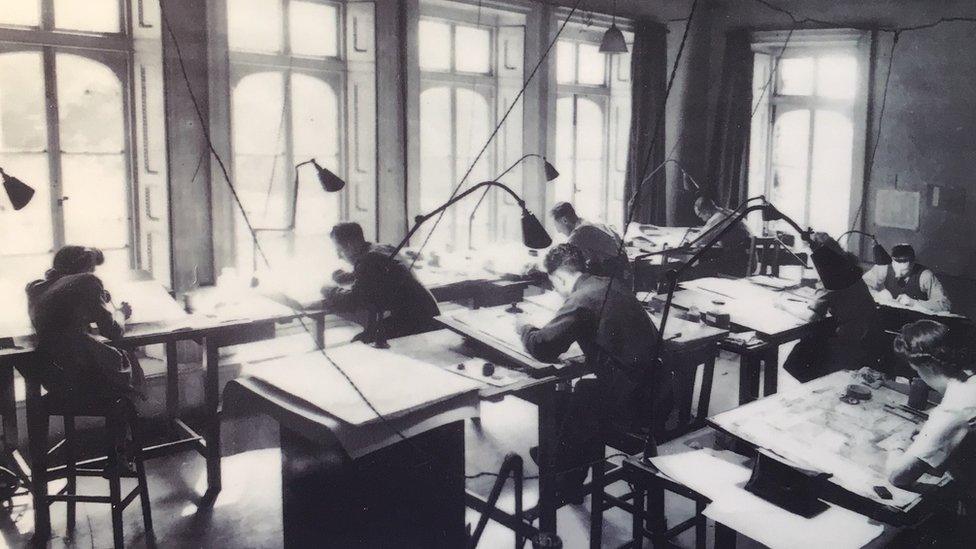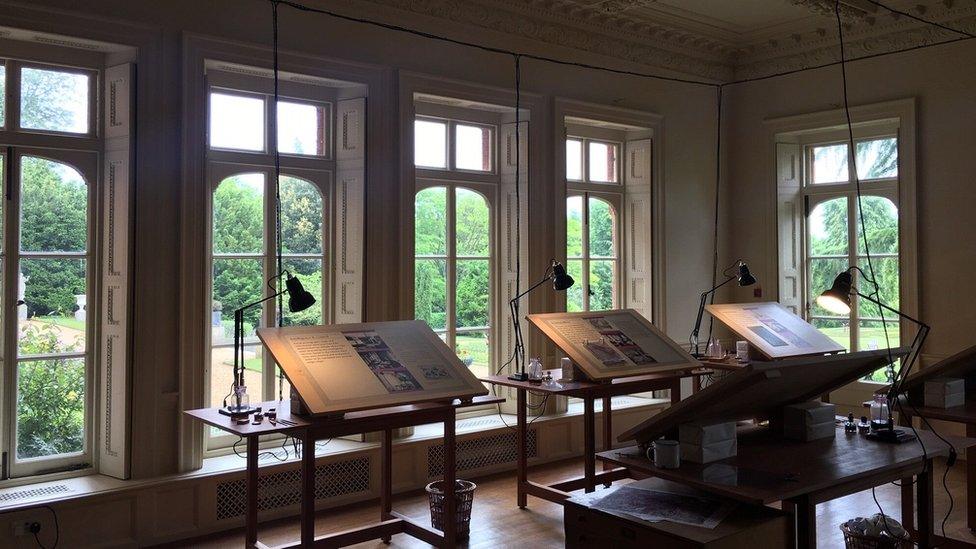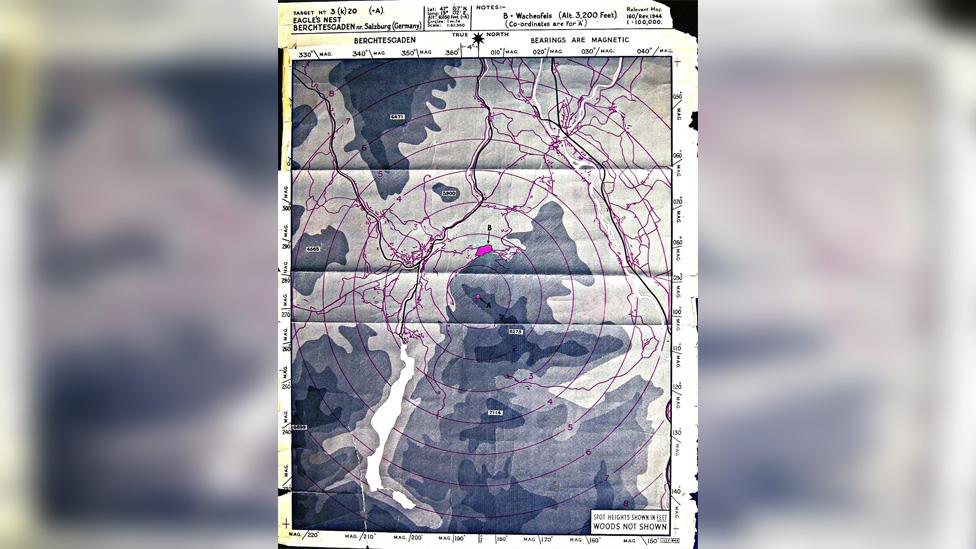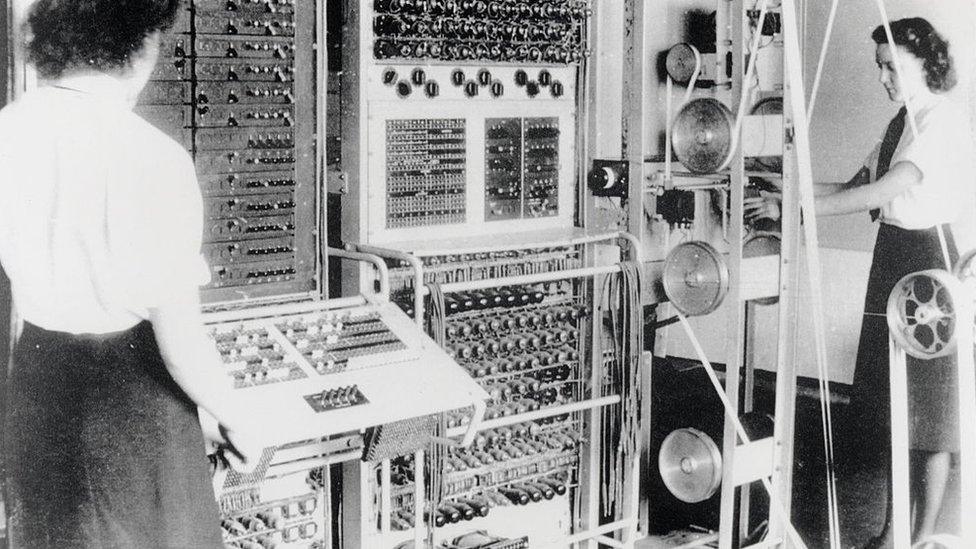Secret RAF WW2 maps unveiled in Buckinghamshire
- Published

Maps of Germany were produced at Hughenden Manor during World War Two to assist the RAF with airborne response
Maps of Germany which were created for the RAF as part of a secret operation during World War Two have been revealed publically for the first time.
Between 1941 and 1946 more than 3,500 hand drawn target maps were produced at Hughenden Manor in Buckinghamshire.
About 100 people were based there but it was only a "chance encounter" in 2004 which led to the Manor's map-making history coming to light.
Original maps are part of an exhibition at the manor which opens on 3 July.

The exhibition has recreated the map-makers desks and features recordings of recruits telling their stories
Due to there being few accurate maps of Germany when the war began in 1939, the RAF's campaigns were "largely ineffective with only around a third of bombs falling close to their target", according to the National Trust.
Two years later, a secret map-making operation was commissioned as Britain relied on an airborne response to the threat from across the sea, following the retreat from Dunkirk in 1940.
The manor was taken over by the Air Ministry and used as a base for the operation.
Artists, designers, architects and cartoonists were recruited to produce the maps for Bomber Command HQ based at Naphill near High Wycombe.

One of the maps on show is of the "Eagle's Nest" in Berchtesgaden which was where Hitler held government meetings
The team remained at Hughenden for five years but the manor's map-making history only came to light in 2004 when a volunteer guide overheard a visitor telling his grandson he was stationed there during the war.
Victor Gregory was recruited from a printing company in London when he was 18 years old.
As part of the exhibition, Mr Gregory and his former colleagues shared their stories of the days working at the manor.

Hughenden was ideally located between the intelligence services at RAF Medmenham and Bomber Command HQ at Naphill
Rob Bandy, Hughenden's house and collections manager, said: "The display highlights the significant role Hughenden played in helping to turn around the outcome of the war, and how that impact was keenly felt by the map-makers themselves.
"We are very grateful to the families of those men and women who have allowed us to share their stories, to shine a new light on this important piece of local and national history."
- Published6 June 2019

- Published22 March 2019
